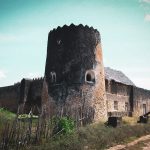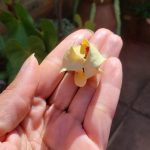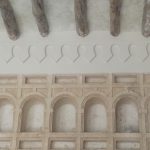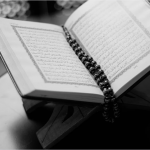Fasihi
Literature and readings on the past and the present as curated by Hiistoriya which focus on culture and history of the East African coast.
- The Swahili Identity Re-envisioned
 Swahili identity is not elusive if we can work to think beyond the racial prison-house of colonial thought… Read more: The Swahili Identity Re-envisioned
Swahili identity is not elusive if we can work to think beyond the racial prison-house of colonial thought… Read more: The Swahili Identity Re-envisioned
- Lesser-Known Heroes of The Pre-colonial Coast of Kenya


 20th October is Mashujaa day in Kenya. On this day, Kenya celebrates heroes who have stood up for our country and the values of humanity and dignity that define our nation. Every year, I notice a massive gap in our celebrations. National media coverage rightfully recognizes freedom fighters who fought against British colonialism, but it often neglects those who resisted Omani, Portuguese, and other invaders long before Britain imposed their rule. Because all Kenyan imperial invaders came through the Coast, it follows that the first resistance to these invaders was at the Coast. The Portuguese first arrived at East Africa’s… Read more: Lesser-Known Heroes of The Pre-colonial Coast of Kenya
20th October is Mashujaa day in Kenya. On this day, Kenya celebrates heroes who have stood up for our country and the values of humanity and dignity that define our nation. Every year, I notice a massive gap in our celebrations. National media coverage rightfully recognizes freedom fighters who fought against British colonialism, but it often neglects those who resisted Omani, Portuguese, and other invaders long before Britain imposed their rule. Because all Kenyan imperial invaders came through the Coast, it follows that the first resistance to these invaders was at the Coast. The Portuguese first arrived at East Africa’s… Read more: Lesser-Known Heroes of The Pre-colonial Coast of Kenya - The Mysterious Kilua


 The kilua or kiluwa (pl. Vilua/viluwa) is a small fragrant magnolia-like flower found on the East African coast. The flower’s tree is known as mlua, mkiluwa or muuwa by the Swahili and mlua, mrua, mchilua, and chingade by the Digo1. They are quintessentially East African. Kilua flowers have six yellow-green tongue-shaped petals with purple highlights at their inner base. The petals alternate between two sizes along the rounded centre, forming a cup shape. The flower hangs upside down on the trees’ branches, hidden by leaves from the eyes and hands of curious women. If you would like to know just… Read more: The Mysterious Kilua
The kilua or kiluwa (pl. Vilua/viluwa) is a small fragrant magnolia-like flower found on the East African coast. The flower’s tree is known as mlua, mkiluwa or muuwa by the Swahili and mlua, mrua, mchilua, and chingade by the Digo1. They are quintessentially East African. Kilua flowers have six yellow-green tongue-shaped petals with purple highlights at their inner base. The petals alternate between two sizes along the rounded centre, forming a cup shape. The flower hangs upside down on the trees’ branches, hidden by leaves from the eyes and hands of curious women. If you would like to know just… Read more: The Mysterious Kilua - Vidaka


 Vidaka/Zidaka (singular: kidaka/idaka)1 are small niches carved into the walls of stone structures. Vidaka comes from the root word daka, which translates into niche or indentation. Daka is also the name for the front porch in Swahili stone homes, which were nooks by the main entrance where male guests were received. The prefix ki- is used in the singular form of the word, making it a diminutive, which reflects a kidaka’s small size.
Vidaka/Zidaka (singular: kidaka/idaka)1 are small niches carved into the walls of stone structures. Vidaka comes from the root word daka, which translates into niche or indentation. Daka is also the name for the front porch in Swahili stone homes, which were nooks by the main entrance where male guests were received. The prefix ki- is used in the singular form of the word, making it a diminutive, which reflects a kidaka’s small size. - Limestone vs. Tiles: Changing Swahili Aesthetics Through The Eyes of Master Craftsmen


 Ahmed Yusuf Suleiman is one of the most sought-after Swahili plasterwork artists and a well-known building contractor on the East African coast. One afternoon in his hometown, Lamu, he gave me a tour of his ongoing contracts, describing the ancient methods that he’s mastered. The majority of his clients are wealthy European developers, some of who have made a hobby out of purchasing ancient upper-class properties and restoring them.
Ahmed Yusuf Suleiman is one of the most sought-after Swahili plasterwork artists and a well-known building contractor on the East African coast. One afternoon in his hometown, Lamu, he gave me a tour of his ongoing contracts, describing the ancient methods that he’s mastered. The majority of his clients are wealthy European developers, some of who have made a hobby out of purchasing ancient upper-class properties and restoring them. - The Art of Swahili Cooking


 To master Swahili cooking, one must master Swahili techniques.
To master Swahili cooking, one must master Swahili techniques. - Was there ever a Kiswahili word for ‘Holy’?


 ‘The available evidence suggests that in the mid-nineteenth century, at the second coming of European-Christians to the East African coast, there was no lexical equivalent for ‘holy’ or its near-synonym ‘sacred’ in the spoken language of the Swahili people.’ Frankl, P. J. L., and Yahya Ali Omar (1999) When looking for Kiswahili words currently in use that come close to describing something divine or sacred, two words attempt to do that: -tukufu and -takatifu. The first word, ‘-tukufu’, comes from the root word -tukuza, which roughly translates into glorious in English. Examples of its use are as an adjective to… Read more: Was there ever a Kiswahili word for ‘Holy’?
‘The available evidence suggests that in the mid-nineteenth century, at the second coming of European-Christians to the East African coast, there was no lexical equivalent for ‘holy’ or its near-synonym ‘sacred’ in the spoken language of the Swahili people.’ Frankl, P. J. L., and Yahya Ali Omar (1999) When looking for Kiswahili words currently in use that come close to describing something divine or sacred, two words attempt to do that: -tukufu and -takatifu. The first word, ‘-tukufu’, comes from the root word -tukuza, which roughly translates into glorious in English. Examples of its use are as an adjective to… Read more: Was there ever a Kiswahili word for ‘Holy’?

